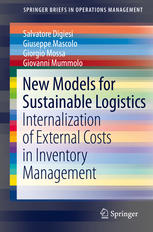

Most ebook files are in PDF format, so you can easily read them using various software such as Foxit Reader or directly on the Google Chrome browser.
Some ebook files are released by publishers in other formats such as .awz, .mobi, .epub, .fb2, etc. You may need to install specific software to read these formats on mobile/PC, such as Calibre.
Please read the tutorial at this link: https://ebookbell.com/faq
We offer FREE conversion to the popular formats you request; however, this may take some time. Therefore, right after payment, please email us, and we will try to provide the service as quickly as possible.
For some exceptional file formats or broken links (if any), please refrain from opening any disputes. Instead, email us first, and we will try to assist within a maximum of 6 hours.
EbookBell Team

4.8
94 reviewsThis book introduces new inventory models to support decision-making when cost of externalities are jointly considered along with costs of logistics. Internalization of cost of externalities gives rise to new logistics costs estimates and functions which managers, researchers, lecturers and students should refer in facing with logistics issues. This book focuses on freight transports of industrial production systems. Logistics play a key role for industries since it reveals a critical function designed and managed to pursue economic goals. A large amount of literature is available providing models, which can be used to minimize logistic costs. However, these models usually neglect externalities.
New Models for Sustainable Logistics: Internalization of External Costs in Inventory Management is comprised of three chapters. Chapter 1 provides a taxonomy of external costs figures as well as data set enabling the reader to perform reliable estimates of freight transport external costs. To this purpose, a full scale case study is developed. Chapter 2 describes a new sustainable inventory management model whose cost functions include externalities. The classical ‘Economic Order Quantity’ model is re-formulated and the new concept of Sustainable Order Quantity (SOQ) is defined. Finally, in Chapter 3 the SOQ model is formulated for different inventory management applications referred to both deterministic and stochastic production environments. Numerical examples are also provided.